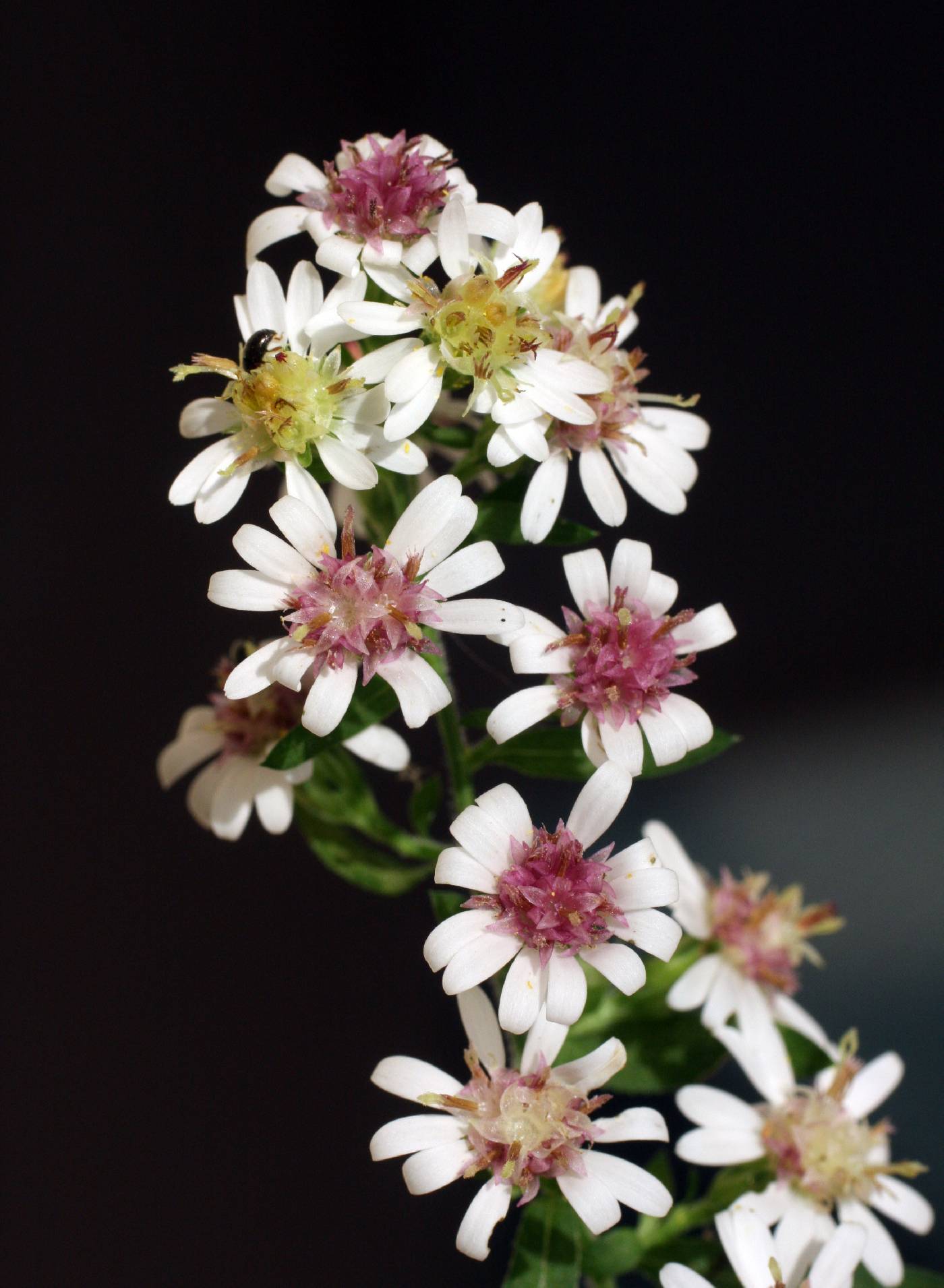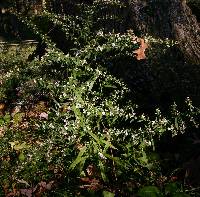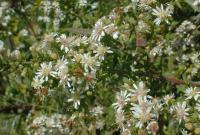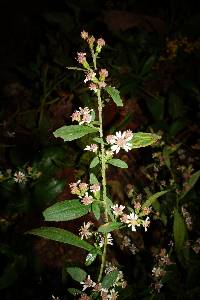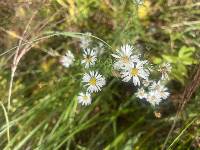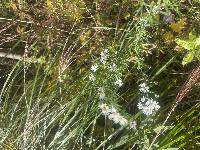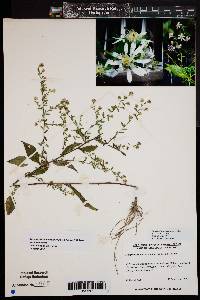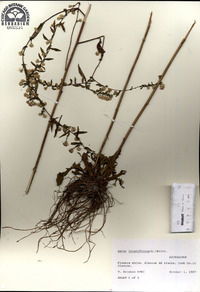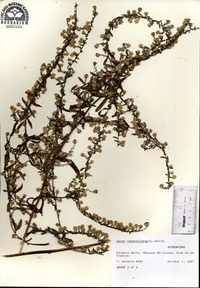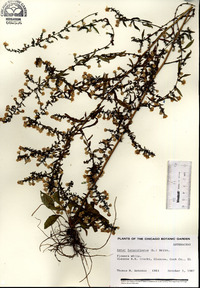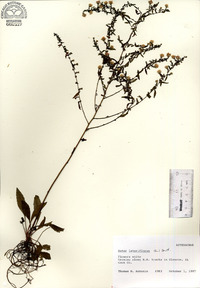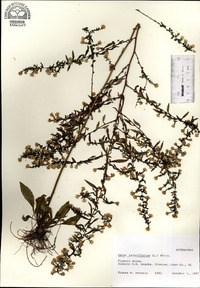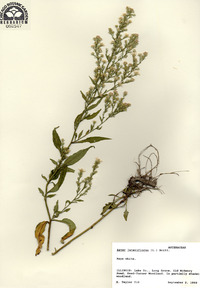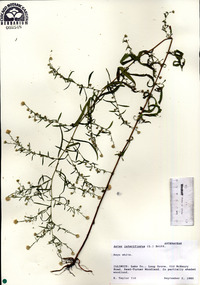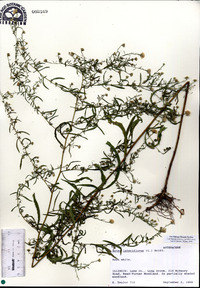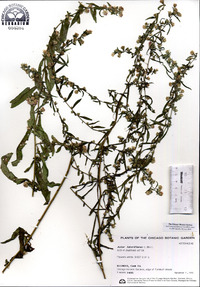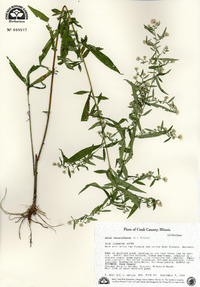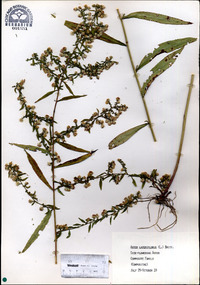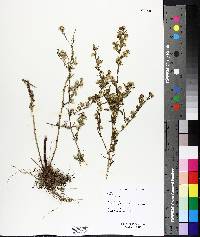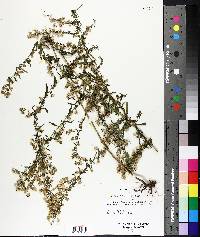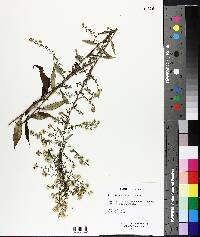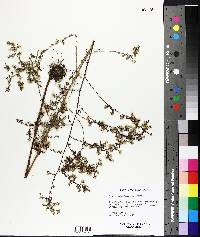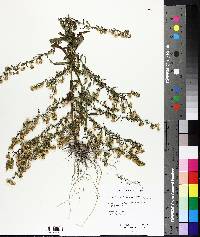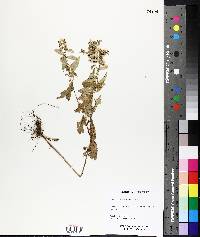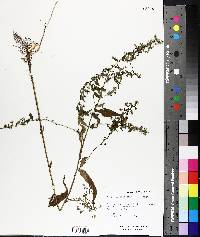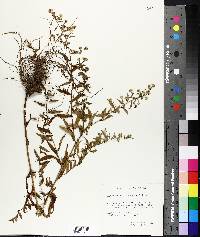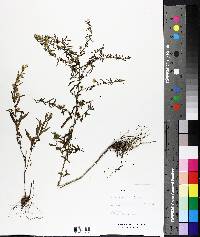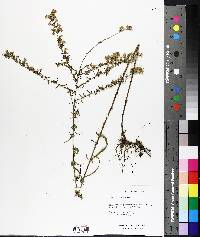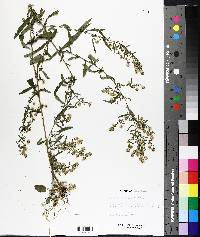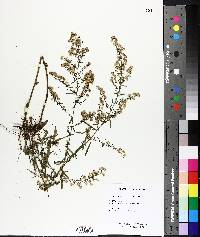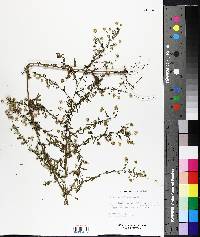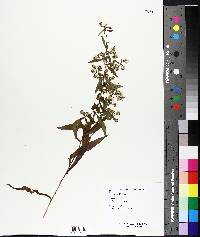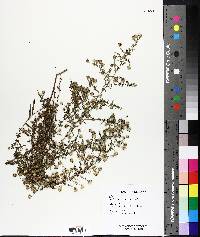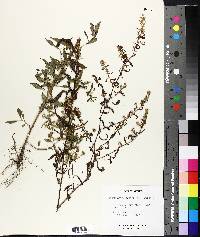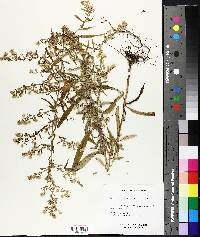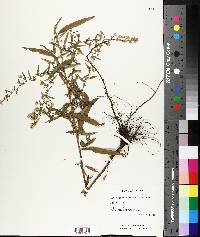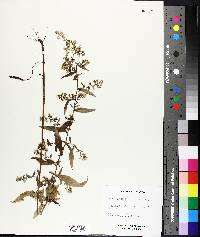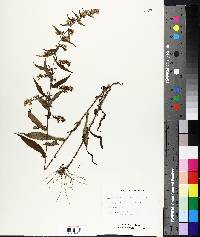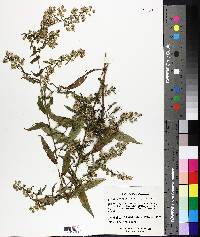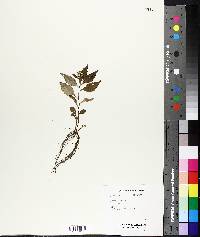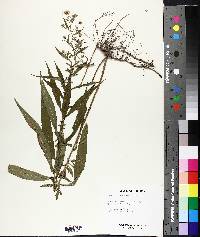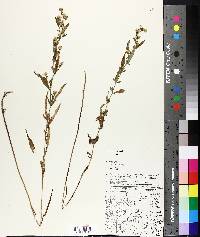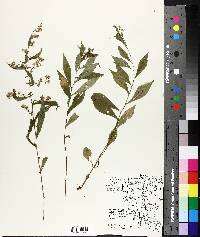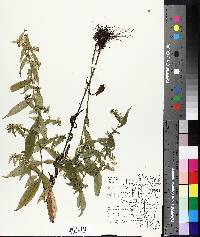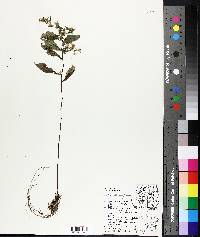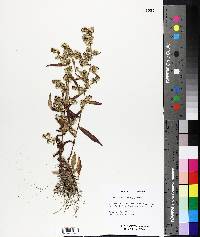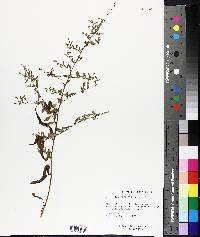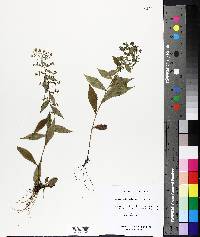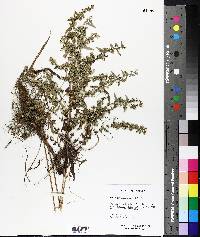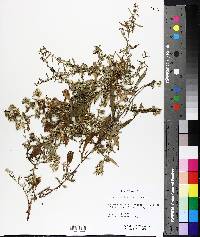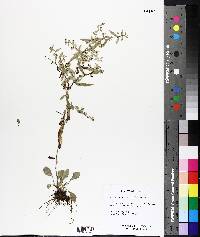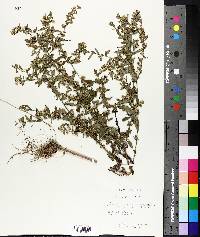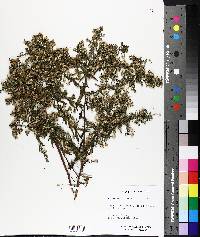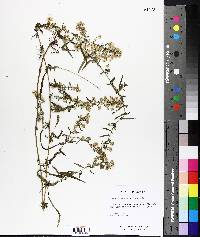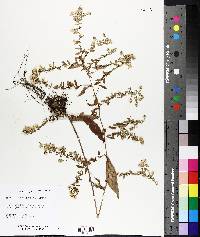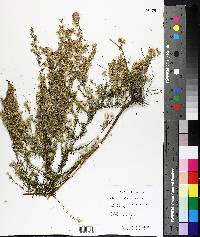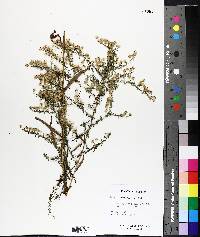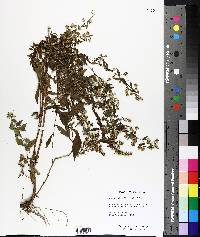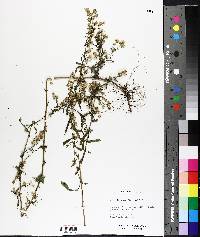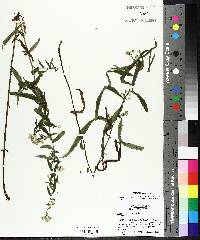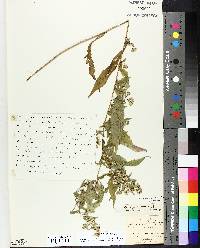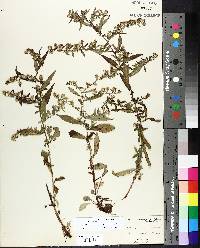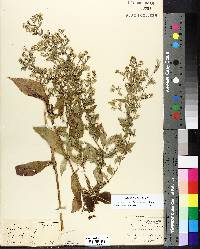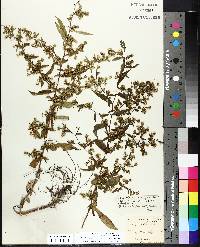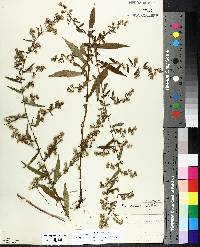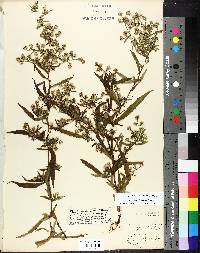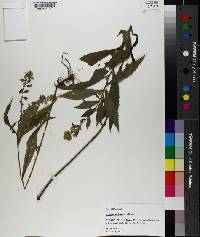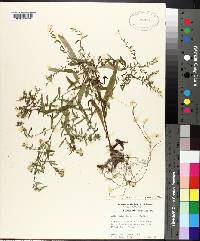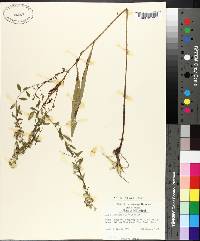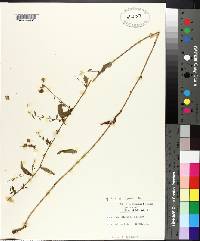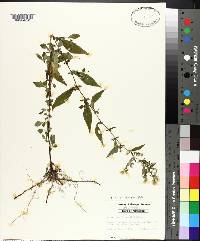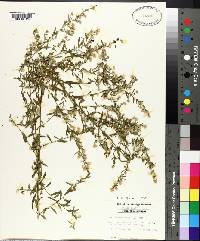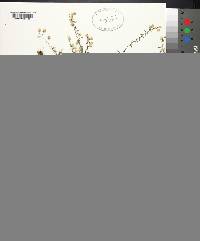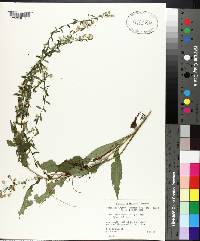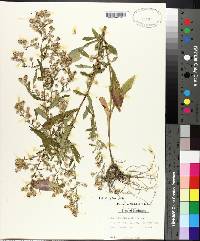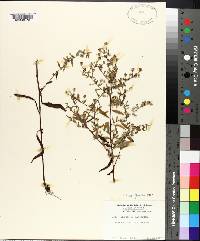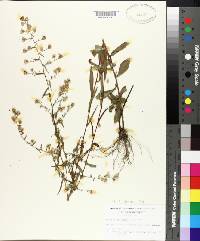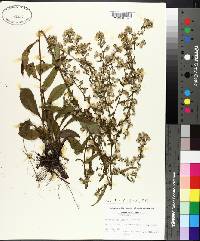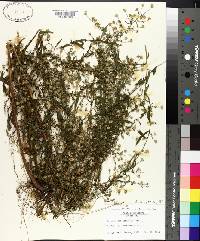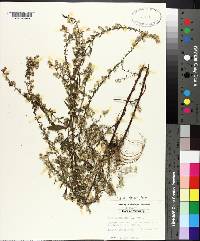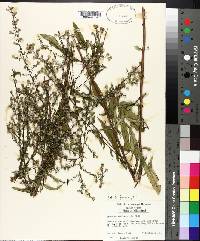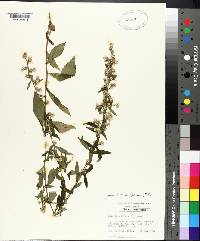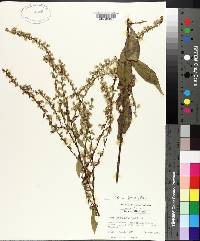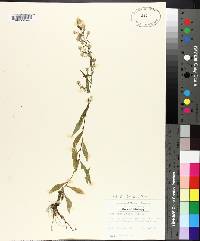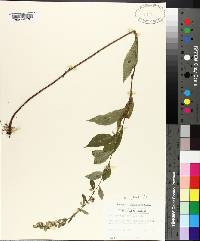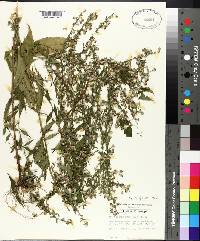
|
|
|
|
Family: Asteraceae
Calico American-Aster, more...Farewell-Summer
[Aster lateriflorus (L.) Britton, moreAster lateriflorus var. indutus Shinners, Aster lateriflorus var. pendulus (Aiton) Burgess, Aster lateriflorus var. thyrsoides (A. Gray) Sheldon, Aster tradescanti Michx., Aster vimineus var. dubius Wiegand] |
Perennials, 20-120(-150) cm, cespitose; with short, woody, branched caudices, or short-rhizomatous. Stems 1-5+, ascending to erect (± arching, slender, brittle), ± densely pilose or villous to glabrate or glabrous (particularly proximally). Leaves thin, membranous, margins serrate to serrulate, scabridulous, apices acute to acuminate, sometimes caudate, mucronulate, abaxial faces glabrous, midveins usually ± densely pilose to glabrate, rarely glabrous, adaxial scabrous (short-strigose) to glabrate; basal usually withering by flowering, sometimes persisting (new vernal rosettes often developing at flowering), petiolate to subpetiolate (petioles narrowly to ± broadly winged, ciliate, bases ± sheathing), blades oblanceolate, lance-ovate or ovate to spatulate or suborbiculate, 5-35 × 7-25 mm, abruptly attenuate, margins crenate-serrate, apices obtuse to rounded or acute; proximal cauline mostly withering by flowering, sessile or subpetiolate (petioles broadly winged), blades usually ovate or elliptic to elliptic-oblanceolate or lanceolate, rarely linear-lanceolate, (30-)50-100(-150) × (2-)10-20(-35) mm, greatly reduced distally, bases attenuate to cuneate; distal sessile, blades ovate, lance-ovate, lance-elliptic, or oblanceolate to lance-linear or linear, 10-150 × 1-30 mm, progressively reduced distally, branch leaves abruptly smaller, bases cuneate, margins sometimes entire. Heads in ample, open, diffuse, ± pyramidal, paniculiform arrays, branches divaricate to long-arching or ± ascending, slender, wiry, secund; usually sessile, sometimes peduncles 0.1-1 cm+, ± pilose, bracts 1-7, linear or subulate to oblong-lanceolate, foliaceous, grading into phyllaries. Involucres cylindro-campanulate, (3.5-)4-6(-7) mm. Phyllaries in 3-4(-6) series, appressed or slightly spreading, oblong-lanceolate or -oblanceoalte (outer) to linear (inner), unequal, bases indurate 1 / 3 - 2 / 3 , margins scarious, erose, hyaline or sometimes reddish, ± ciliolate, green zones lanceolate to ± diamond-shaped, apices (outer) acute, callus-pointed, (mid) acute to acuminate, or obtuse, sometimes purplish, abaxial faces glabrous (outer), mid sparsely puberulent. Ray florets 8-15(-23); corollas white, rarely pinkish or purplish, laminae (3-)4-5(-8) × 0.9-1.2 mm. Disc florets 8-16(-20); corollas cream to light yellow turning pink or reddish purple, (2.5-)3-5 mm, tubes shorter than funnelform-campanulate throats, l Flowering Aug-Oct. Relatively shaded habitats, dry to humid soils, usually deciduous woodlands (beech-maple, oak-hickory, mixed hardwoods), sometimes conifer woods, sometimes swamp forests (conifer or dediduous), edges of woods, meadows, usually rocky or sandy stream and pond shores, roadsides; 0-400 m; Man., N.B., N.S., Ont., P.E.I., Que.; Ala., Ark., Conn., Del., D.C., Fla., Ga., Ill., Ind., Iowa, Kans., Ky., La., Maine, Md., Mass., Mich., Minn., Miss., Mo., Nebr., N.H., N.J., N.Y., N.C., Ohio, Okla., Pa., R.I., S.C., S.Dak., Tenn., Tex., Vt., Va., W.Va., Wis. Symphyotrichum lateriflorum has been reported in British Columbia as an ephemeral that did not persist. G. L. Nesom (1994b) and J. C. Semple et al. (2002) recognized several varieties within the complex: var. lateriflorum (syn. Aster vimineus Lamarck); var. angustifolium (Wiegand) G. L. Nesom (syn. A. lateriflorus var. angustifolius Wiegand); var. flagellare (Shinners) G. L. Nesom (syn. A. lateriflorus var. flagellaris Shinners, A. lateriflorus var. indutus Shinners); var. hirsuticaule (Lindley ex de Candolle) G. L. Nesom [syn. A. hirsuticaulis Lindley ex de Candolle, A. lateriflorus var. hirsuticaulis (Lindley ex de Candolle) Porter]; var. horizontale (Desfontaines) G. L. Nesom [syn. A. horizontalis Desfontaines, A. lateriflorus var. horizontalis (Desfontaines) Farwell]; var. spatelliforme (E. S. Burgess) G. L. Nesom [syn. A. spatelliformis E. S. Burgess, A. lateriflorus var. spatelliformis (E. S. Burgess) A. G. Jones]; and var. tenuipes (Wiegand) G. L. Nesom (syn. A. lateriflorus var. tenuipes Wiegand, A. acadiensis Shinners). Much genetic and phenotypic variation is encountered within the complex; a thorough study is needed before a coherent taxonomy can be achieved.
Stems 3-12 dm from a branched caudex or short stout rhizome, ±curly-villous to glabrous; lvs scabrous or glabrous above, apparently glabrous beneath except for the usually villous or puberulent midrib; basal and lower cauline lvs soon deciduous, or the basal sometimes persistent, petiolate, and with obovate to elliptic or subrotund blade to 8 נ4 cm, those above sessile or nearly so, broadly linear to more often lanceolate, lance-elliptic, or subrhombic, tending to taper from the middle to both ends, entire or serrate, the main ones 5-15 נ0.5-3 cm, those of the branches often abruptly reduced; heads ±numerous in a widely branched or occasionally more simple infl, commonly subracemiform on the branches; invol glabrous, 4-5.5 mm, its bracts imbricate in few series, obtuse or acute, with evident, fairly broad green tip, often suffused with purple upward; rays 9-14, white or slightly purplish, 4-6.5 mm; disk-cors goblet-shaped, the recurved lobes comprising 50-75% of the limb; 2n=16, 32, 48, 64. Various habitats, most commonly in open woods, dry open places, and on beaches; Magdalen I. to Fla., w. to Minn., e. S.D., e. Kans., and Tex. (A. agrostifolius; A. hirsuticaulis) Gleason, Henry A. & Cronquist, Arthur J. 1991. Manual of vascular plants of northeastern United States and adjacent Canada. lxxv + 910 pp. ©The New York Botanical Garden. All rights reserved. Used by permission. From Flora of Indiana (1940) by Charles C. Deam This species is our common woodland aster. It is found in both dry and moist places, usually preferring white oak woodland. [Variety angustifolius] is a narrowleaf form of the species and, like it, prefers the woodland, although both of them are sometimes found in the open, mostly along roadsides. …… Indiana Coefficient of Conservatism: C = 3 Wetland Indicator Status: FACW |
This project was made possible in part by the Institute of Museum and Library Services [MG-70-19-0057-19].
Powered by Symbiota

